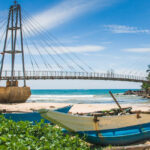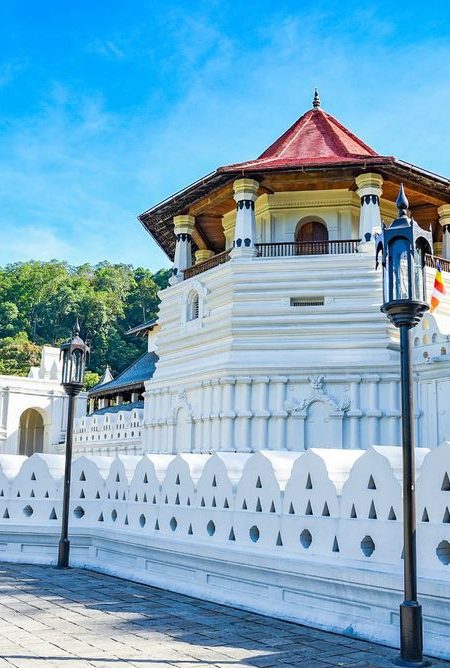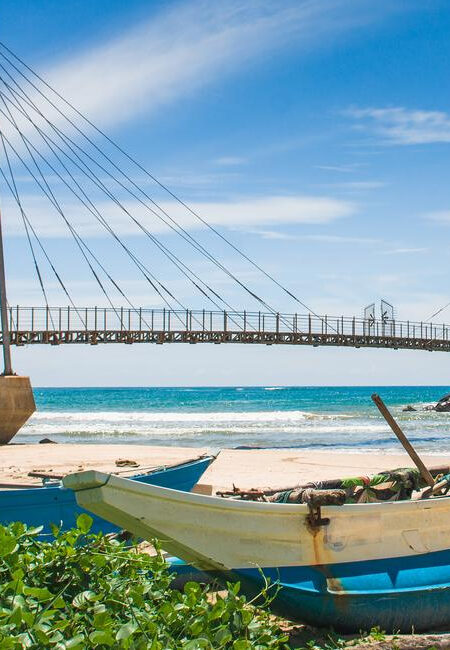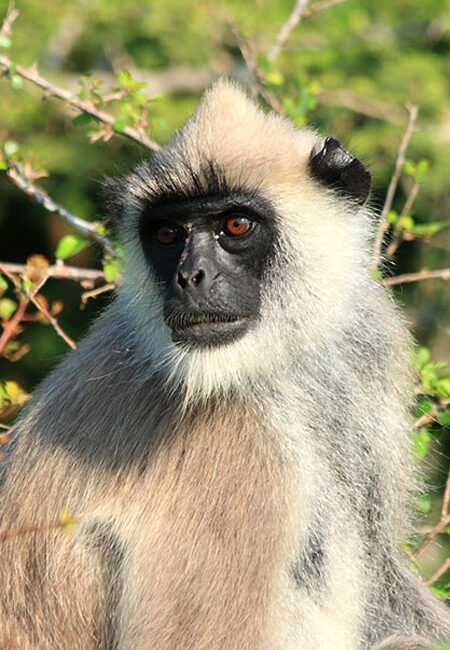Sri Lanka, an enchanting island nation in South Asia, is a gem hidden in the vast Indian Ocean. Known for its rich history, diverse culture, and breathtaking landscapes, Sri Lanka is often referred to as the “Pearl of the Indian Ocean.” In this article, we will explore the geographical location of Sri Lanka, delve into its vibrant culture and history, and discover the many reasons why this island attracts countless visitors from around the globe.
Geographical Setting
Sri Lanka is located southeast of the Indian subcontinent, positioned between latitudes 5° 55′ and 9° 51′ north, and longitudes 79° 41′ and 81° 53′ east. The country is separated from India by the narrow Palk Strait, though they are linked by the man-made Adam’s Bridge. Covering approximately 65,610 square kilometers, Sri Lanka boasts a varied landscape ranging from arid plains to highlands, and lush forests to sandy beaches, making it a geographical marvel.
Strategic Importance
The island’s strategic position on the maritime routes has historically made it a naval link between West Asia and South East Asia. This strategic importance has shaped much of Sri Lanka’s history, attracting traders, settlers, and invaders alike, contributing to the rich tapestry of its culture and ethnic diversity.
Historical Overview
Sri Lanka has a history dating back over 3,000 years, with evidence of pre-historic human settlements dating back at least 125,000 years. It was historically known as Lanka, Lankadweepa, Simoundou, Taprobane, Serendib, and Ceylon. The chronicles, such as the Mahavamsa, provide insights into a rich history filled with kings and kingdoms, colonial conquests, and a struggle for independence that culminated in 1948 when Sri Lanka became a sovereign nation.
Colonial Legacy
The Portuguese, Dutch, and British have all left their mark on Sri Lanka through architecture, cuisine, and language, contributing to a cultural mosaic that is distinctly Sri Lankan. Each colonial period has contributed to the socio-economic fabric of the nation, influencing everything from administrative systems to the education sector.
Cultural Tapestry
Sri Lanka’s culture is a vibrant mix of customs, rituals, and traditions influenced by its history, religion, and the various ethnic groups that call it home. The majority Sinhalese and the Tamil minority are the two largest ethnic groups, each with their own unique traditions and cultural practices.
Festivals and Cuisine
Sri Lanka is renowned for its festivals, the most famous being the Esala Perahera in Kandy, which is a grand festival celebrated with elegant costumes, traditional dances, and adorned elephants. The Sinhala and Tamil New Year, a harvest thanksgiving, is celebrated with games, rituals, and delicacies that are unique to the island.
Sri Lankan cuisine is as diverse as its culture, characterized by its aromatic spices and rich flavors. Staples such as rice and curry are often accompanied by an array of side dishes, including spicy sambols, mallung (greens), and pappadam (crisp flatbread).
Natural Beauty and Biodiversity
The island’s compact size belies its incredible biodiversity. Sri Lanka boasts several UNESCO World Heritage Sites, including the sacred city of Anuradhapura, the ancient city of Polonnaruwa, and the golden temple of Dambulla, highlighting its rich historical heritage.
Wildlife and Natural Reserves
Sri Lanka is also famous for its natural beauty, evident in its national parks and reserves such as Yala, Wilpattu, and Udawalawe, which are home to a wide range of wildlife, including elephants, leopards, and a variety of bird species. The island’s topography offers scenic trails, mountainous terrains, and cascading waterfalls, attracting nature lovers and adventure seekers alike.
Modern Sri Lanka
Today, Sri Lanka is a vibrant South Asian hub with a growing economy and a development trajectory that includes advances in technology, infrastructure, and tourism. The country continues to balance modernity with tradition, preserving its cultural heritage while embracing new innovations.
Tourism and Hospitality
Tourism is a vital part of the Sri Lankan economy, with the island offering a plethora of experiences from beach holidays and cultural tours to eco-tourism adventures. Sri Lanka’s hospitality is legendary, with its friendly locals going out of their way to make visitors feel at home.
Best Places to Visit in Sri Lanka
Sri Lanka, the jewel of the Indian Ocean, offers a stunning array of destinations catering to all types of travelers. From its ancient ruins and lush tea estates to pristine beaches and bustling markets, here are some of the best places to visit in Sri Lanka that showcase the island’s diversity and beauty.
1. Sigiriya Rock Fortress
Often referred to as the “Eighth Wonder of the World,” Sigiriya Rock Fortress is a stunning archaeological site standing majestically atop a massive 200-meter high rock column. This ancient palace and fortress complex, renowned for its historical frescoes and strategic architecture, offers panoramic views of the surrounding jungle.
2. Galle Fort
In the heart of the historic city of Galle, the Galle Fort exemplifies the fusion of European architectural styles with South Asian traditions from the colonial period. Walk along its massive walls, visit the lighthouse, and explore the charming streets filled with boutiques, cafes, and art galleries.
3. Kandy
The cultural capital of Sri Lanka, Kandy is home to the Temple of the Tooth Relic, one of the most sacred Buddhist sites in the world. This historic city also hosts the Esala Perahera, a spectacular annual festival with elephants, dancers, and drummers.
4. Yala National Park
For wildlife enthusiasts, Yala National Park offers one of the best wildlife viewing opportunities in Asia. It boasts a high concentration of leopards, alongside elephants, crocodiles, and hundreds of bird species. Safari tours provide a thrilling way to explore the park’s vast landscapes.
5. Nuwara Eliya
Nuwara Eliya, known as “Little England,” is a serene hill station famed for its verdant tea plantations and colonial-era architecture. The cool climate makes it a perfect retreat from the tropical heat of the coast. Don’t miss a visit to a tea estate to learn about tea production and enjoy a fresh cup.
6. Adam’s Peak (Sri Pada)
Adam’s Peak is a pilgrimage site revered by multiple religious groups. Climbing this mountain is an overnight endeavor, aiming to reach the summit by sunrise, where the view and the spiritual experience are equally breathtaking.
7. Dambulla Cave Temple
The Dambulla Cave Temple, a World Heritage site, consists of five caves filled with religious and historical paintings and numerous Buddha statues. Dating back to the 1st century BCE, these caves offer a glimpse into the spiritual and artistic traditions of ancient Sri Lanka.
8. Polonnaruwa
The ancient city of Polonnaruwa remains one of the best-planned archaeological relic sites in the country, showcasing the discipline and greatness of the Kingdom’s first rulers. Its numerous statues, temples, and stupas impress with historical significance and architectural excellence.
9. Mirissa
Mirissa is a must-visit for beach lovers and those looking to unwind by the sea. It’s also a great spot for whale and dolphin watching tours, especially during the migration season from November to April.
10. Anuradhapura
This ancient city, once the capital of Sri Lanka, contains some of the oldest and most significant cultural and religious monuments in the country. It’s home to several stupas, ancient pools, and monumental temples.
11. Arugam Bay
Known for its surfing waves, Arugam Bay is a hotspot for surfers from around the globe. The laid-back vibe, coupled with the excellent surfing conditions from April to October, makes it a perfect destination for those looking to catch the best waves.











